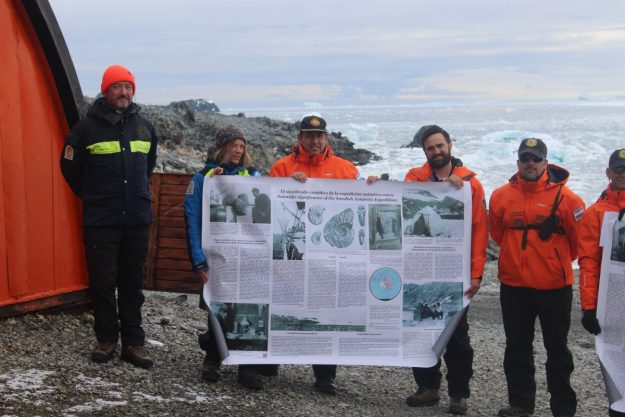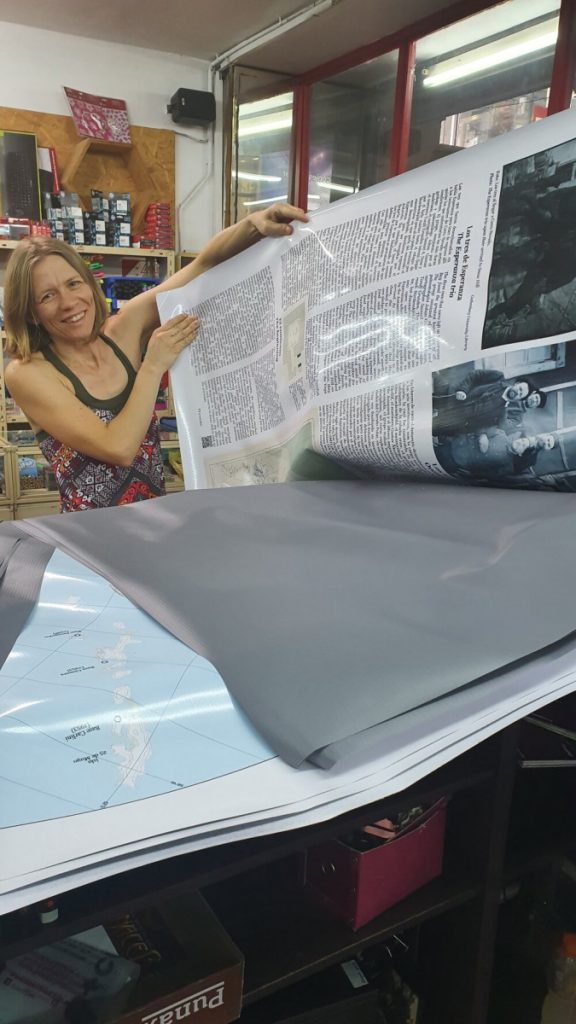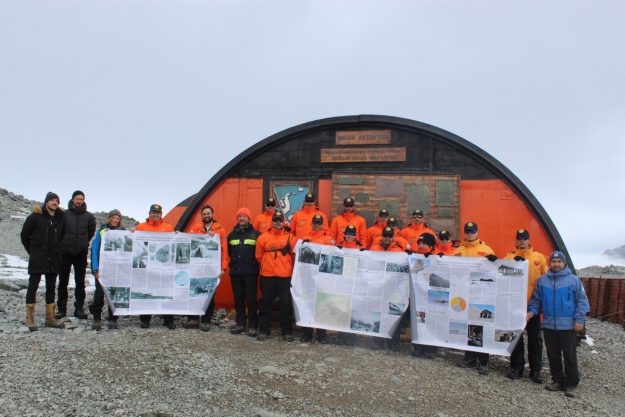Context: Kati Lindström, a researcher at the Division, is currently in Antarctica as part of the CHAQ2020 Argentinean-Swedish expedition. Further reporting on this project is accessible through the researcher’s website, Melting History. As part of the expedition, she lead the curation of new posters for an exhibition at one of the southernmost museums in the world.
How to design an addition to a museum that you have never been to? A museum that is among the most austral ones in the world, where you cannot go to think, rethink, measure and measure again? Where you do not know the light conditions and where you can only guess from the photographs in what context your contribution will be displayed. A museum that, in addition, is managed by military officials in the capital who, if they have ever been to the museum, where not here in the recent years; a museum where the managing personnel changes every year as the Base inhabitants go back to their posts in Argentina and new ones flow in. And consequently, a museum, where objects are seldom removed or rearranged. And last, but not least, how to do it in a period of time when there are millions other and more urgent practicalities that need to be solved before the upcoming expedition?
These are some of the challenges that our team faced when preparing our small contribution to the museum at Esperanza base. Resulting banners were handed over to the head of the Base, Lieutenant Colonel Walter Nahueltripay, during a festive ceremony on Friday, January 31st. The part of the 2019-2020 overwintering group of the base that has already arrived (the second half is scheduled to arrive in coming days) lined up in a formation to the backdrop of a breathtakingly beautiful Esperanza Bay, filled with smaller and bigger white ice floats. Short speeches were given by Walter, Pablo, Dag and Kati after which everybody could take a look at one of the four banners that was already set up in the museum.

So how did we solve the above dilemmas? It is almost impossible to find one-two original objects that would narrate the intricate story of the 1901-1902 Nordenskjöld expedition. Besides, the base already contemplates with one of the biggest original artefacts left by the expedition: the stone refuge built by Andersson, Duse and Grundén. What other super-object could relate the story better? The best solution, given all the circumstances seemed to be classical information banners that could be set up on empty wall space. The result were four gigantic banners: one on the history of the expedition, one on its scientific relevance, a longer explanation of the Historic Sites and Monuments (HSMs) of the Antarctic Treaty and last, but not least, a banner on the Argentine Antarctic explorer Gustavo Adolfo Giró Tapper. The banners are bilingual and were printed in Buenos Aires with the support from the Swedish Heritage Board. Kati and Pablo extend their thanks to Lize-Marié van der Watt for her contribution to the HSM banner and flawless English, IAA researchers Andrés Zakrajsek and Matías Belinco as well as Cristian Ortiz-Villalón for their help.

At the time of writing, February 2nd, we are waiting for a helicopter to fly back to Marambio base where we are still hoping to work on Penguin Bay and Larsen Cairn before heading back to Rio Gallegos and Buenos Aires. Because of the change in icebreaker’s schedule, Paulet Island will have to wait until the next occasion. With all the boxes in the work plan ticked for Esperanza, we leave for Marambio with an immense gratitude to Esperanza base’s friendly crowd without whose help none of it would have been possible.

*Thanks goes to the research team for allowing us to reblog Kati’s post.

